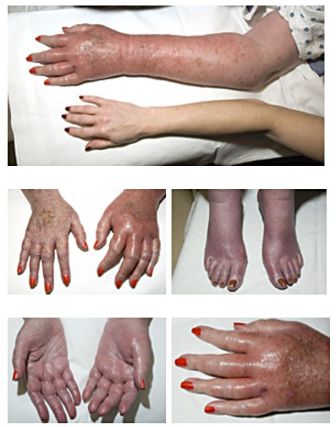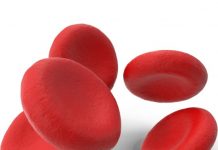High red blood cell count is the primary way to diagnose polycythemia. What is polycythemia in pshysiological terms? A decrease in the volume of plasma in the body, along with an increase in hematocrit, hemoglobin or RBC count is seen in the disorder. Essentially the production of red blood cells in the bone marrow goes up beyond the normal limits. This unbalances the blood and causes all kinds of problems that can lead to major physical conditions if left unchecked.
Some of these possibly fatal conditions include thrombus, hemorrhage, heart attacks, pulmonary hypertension, pulmonary embolism, kidney stones, renal damage, kidney dysfunction, gout and even leukemia.
Depending on the reason why the red blood cells are being produced in excess the disease is classified as primary or secondary.
In primary polycythemia the problem is inherent in the body of the patient, while in secondary polycythemia the problem is a response to an external factor which triggers the excessive production of red blood cells in the patient.
Genetic triggers can be identified with ease if there is a family history of polycythemia .The diagnosis of this disease is done by the health care provider using a series of tests.
What is polycythemia signaled by?
The normal limit of hematocrit is below 48% in women and below 52 % in men. When the limit is crossed the person is said to be suffering from polycythemia. In case of hemoglobin triggering the disease the figures are more than 16.5 g/dL in women and more than 18.5 g/dL in men. The disease needs to be confirmed via a blood test and can be treated with medication once diagnosed. The disease can cause a number of related disorders and medical attention should be paid to these possible off shoots of the problem.
What is polycythemia seen as in the physical symptoms?
The symptoms that a patient of polycythemia may display are weakness of the muscles. There is also a sense of fatigue and loss of stamina to do work. A shortness of breath and panting comes up. There may be disturbed sleep which leads to even more fatigue. A chronic cough may also develop, as may other related lung diseases. The patient may have a headache that is persistent or even feel dizzy when the polycythemia sets in.
Abdominal pain is sometimes reported as is joint pain, itching and or bruising of the body. Other blood disorders may also set in.
What is polycythemia treated with?
The increased thickness of the blood due to the excessive formation of red blood cells can result in poor blood supply to vital organs. The constant lack of blood supply can damage them and so it is imperative that the blood be thinned down to normal consistency. This can be done by oral medication which is known to have blood thinning properties. Aspirin is a common brand of blood thinning medicationwhich is available over the counter.
However it is recommended that the anti platelet agents medication be prescribed and supervised by a trained medical care expert when the patient is suffering from polycythemia.













